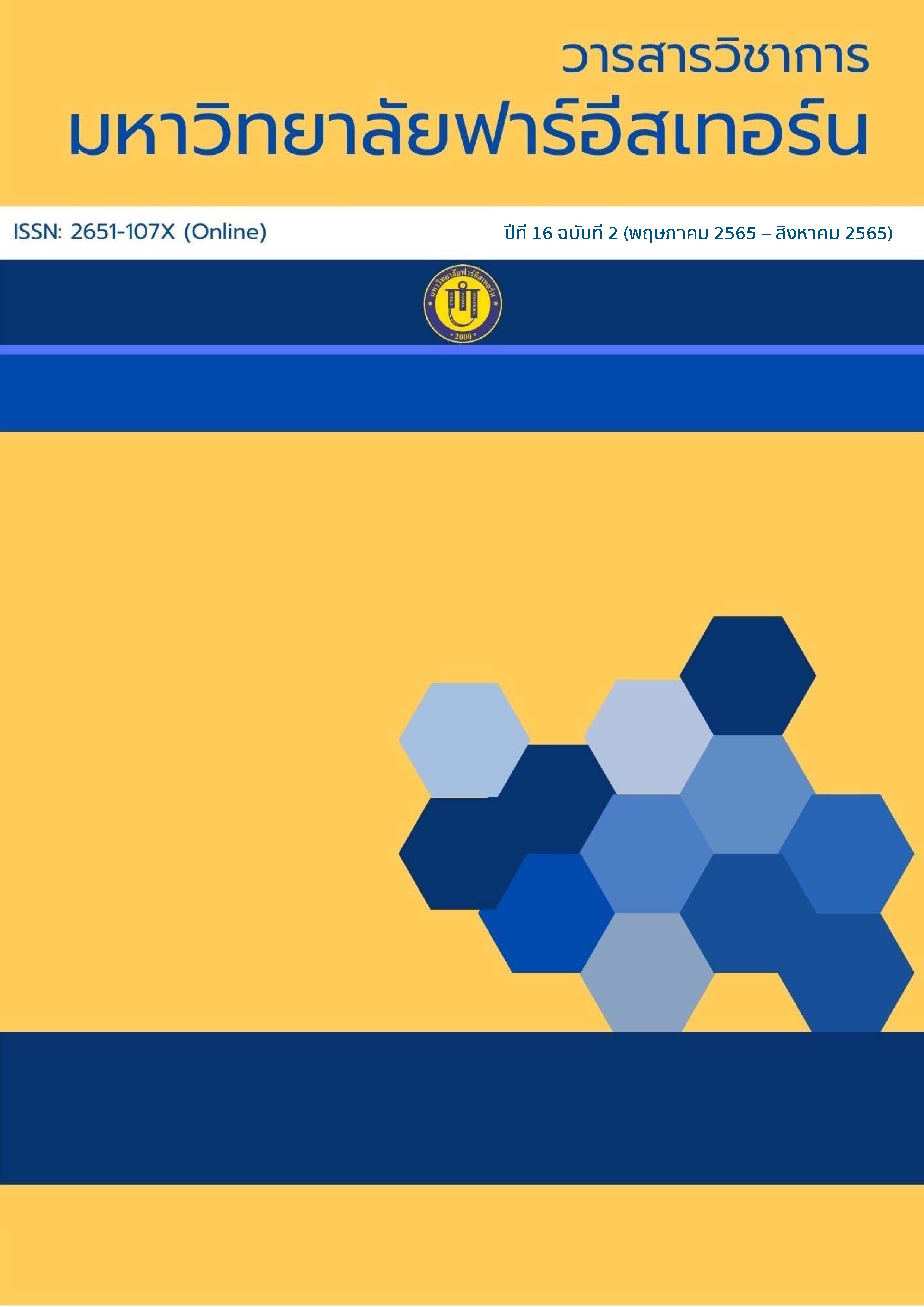Customer Journey That Influences Consumers’ Choices of Restaurants via Grab Food Application in Muang District, Chiang Mai Province
Main Article Content
Abstract
The objectives of this quantitative research were to explore consumers' behaviors in using restaurant services via the Grab Food application and to investigate customer journey strategy that influences consumers’ choices of restaurants via the application in Muang district, Chiang Mai province. The data were collected using an online questionnaire obtained from 385 samples who had used restaurant services via the Grab Food application in Muang district, Chiang Mai Province and were statistically analyzed for frequency, percentage, and standard deviation. The multiple regression analysis was also conducted. The research results revealed that most of the sample group liked to order Thai food; and convenience was the main reason for ordering with the frequency of one to two times a week. The average expense was 101 to 200 baht a time and the opportunity of buying was on a regular basis for personal and/or family consumption. The channel to know restaurants the most was through the application and the individual influencing the decision to buy food the most was oneself. For the customer journey strategy, the factors influencing the decision to buy food via the application were Act, Ask, Appeal, Advocate, and Aware.
Article Details

This work is licensed under a Creative Commons Attribution-NonCommercial-NoDerivatives 4.0 International License.
1. Any views and comments in the Journal of Social Innovation and Lifelong Learning are the authors’ views. The editorial staff have not to agree with those views and it is not considered as the editorial’s responsibility.
2. The responsibility of content and draft check of each article belongs to each author. In case, there is any lawsuit about copyright infringement. It is considered as the authors’ sole responsibility.
3. The article copyright belonging to the authors and The Far Eastern University are copyrighted legally. Republication must be received direct permission from the authors and The Far Eastern University in written form.
References
กิรณา หิรัญธนากร. (2563). กลยุทธ์การตลาด 5A และการรับรู้คุณภาพการบริการในการใช้บริการจัดส่งอาหารผ่านโมบายแอพพลิเคชั่นของผู้บริโภคในพื้นที่กรุงเทพมหานคร [การค้นคว้าอิสระปริญญามหาบัณฑิต, มหาวิทยาลัยศรีนครินทรวิโรฒ]. DSpace at Srinakharinwirot University. http://ir-ithesis.swu.ac.th/dspace/bitstream/123456789/802/1/gs581130095.pdf
กชวรรณ เวชชพิทักษ์. (2562). กลยุทธ์การตลาด 5A และการตัดสินใจซื้อสินค้าเกษตรอินทรีย์ของผู้บริโภค[วิทยานิพนธ์ปริญญามหาบัณฑิต มหาวิทยาลัยศิลปากร]. DSpace at Silpakorn University. http://ithesis-ir.su.ac.th/dspace/bitstream/123456789/2867/1/61602332.pdf
ประชาชาติธุรกิจ. (2561, 29 สิงหาคม). เจาะพฤติกรรม Gen Y. ประชาชาติธุรกิจ. https://www.prachachat.net/finance/news-211619
ศูนย์วิจัยกสิกรไทย. (2563, 5 สิงหาคม). หลังโควิด-19 ธุรกิจ Food Delivery ขยายตัวบนการแข่งขันที่ยิ่งรุนแรงให้บริการแพลตฟอรม์ รุกไปสู่ Super Application. ศูนย์วิจัยกสิกรไทย. https://www.kasikornresearch.com/th/analysis/k-econ/business/Pages/z3128-Food-Delivery.aspx
John, F. et al., (2004). Strategic Management. New York: McGraw – Hill.
Kotler, P., Kartajaya, H., & Setiawan, I. (2017). Marketing [การตลาด 4.0] (ณงลักษณ์ จารุวัฒน์, ผู้แปล; พิมพ์ครั้งที่ 2). เนชั่นบุ๊คส์.
Manakitsomboon, H. (2021, July 1). Leading food delivery services based on market-share Thailand 2020. statista. https://www.statista.com/statistics/1247775/thailand-leading-food-delivery-services-by-market-share/
Roni, A. (2020). Proposed Digital Marketing Strategy for Muslim Women’s Fashion Brand (Arra Style). Journal of International Conference Proceedings (JICP), 3(4), 36-44. https://ejournal.aibpm.org/index.php/JICP/article/view/1008/941

